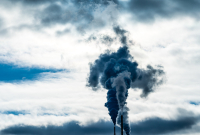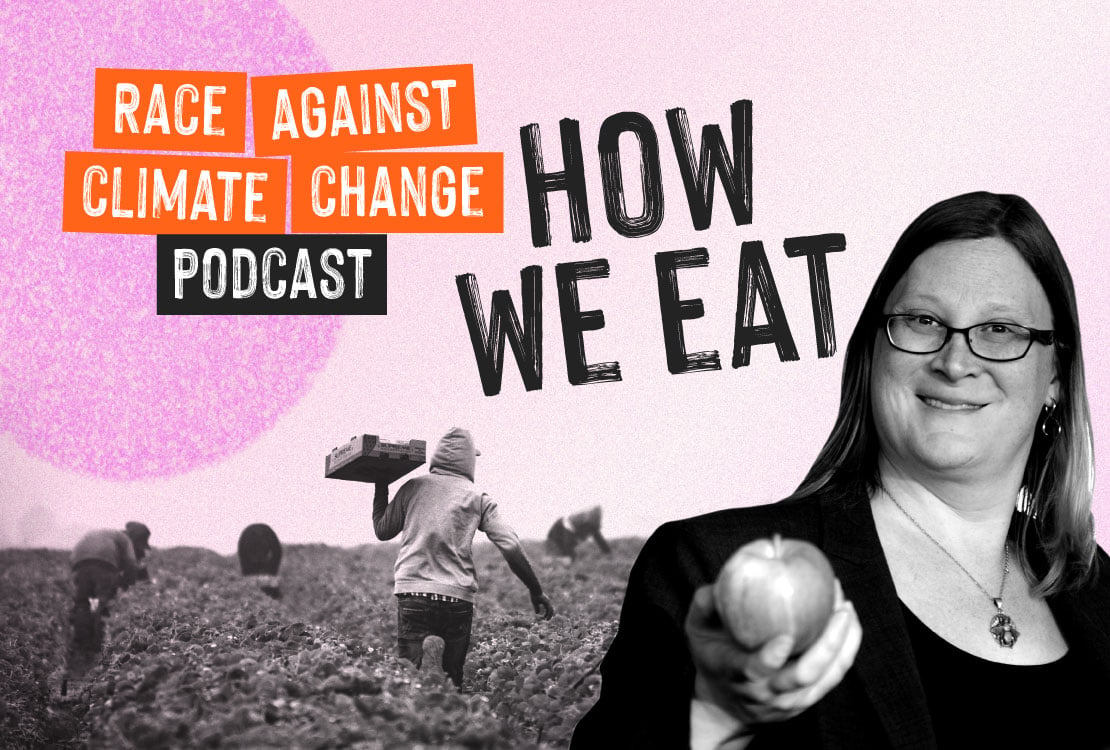Support strong Canadian climate journalism for 2025
Environmental groups are calling on the federal government to step in after oilsands tailing ponds grew by 90 million cubic metres in 2020 despite a drop in oil production, according to a report released last week by the Alberta Energy Regulator (AER).
“Tailings is the death of us,” said Alice Rigney, an elder from the Athabasca Chipewyan First Nation. She says one of the first tailing ponds she remembers was right on the bank of the Athabasca River.
“I remember our chief saying that if ever that gave and there was a spill, we would have to become refugees of our own land because we will have to relocate,” said Rigney. “It's not safe, it's poison.”
Oilsands tailings are a thick, sludge-like mixture created through the mining and extraction of bitumen. The mixture contains toxic naphthenic acids and leftover remnants of bitumen, as well as silt, clay, and water, and is stored in man-made ponds called tailings ponds.
Alberta tailings ponds currently contain 1.36 billion cubic metres of fluids, according to the report, covering a surface 1.7 times the size of Vancouver.
“We're constantly being told by the industry and by the Alberta government that the issue is being controlled and that they're going to be cleaned up,” said Aliénor Rougeot, Environmental Defence’s climate and energy program manager.
“But when production goes down, we would see this as an opportunity to clean up what's there, and the fact that (tailings) continue to grow kind of hints at the fact that it continues to be … not managed.”
Rougeot said another troubling finding from the report is that operators failed to reach both their own projections and regulatory standards for decreased volumes of fluids in the tailings ponds.
The issue is complicated because dealing with tailings is understood to fall under provincial jurisdiction. But Rougeot says there are two areas where the federal government could take action.
The first is to prosecute oilsands producers for tailings chemicals leaching into ground and surface water under subsection 36(3) of the Fisheries Act. The act prohibits the release of any deleterious substance into water frequented by fish or any place where the substance may enter water frequented by fish.
“The Athabasca (River) and some of its tributaries have fish, so when you put tailings ponds that are not fully impermeable (and) leak-proof, then you are acting in violation of the Fisheries Act,” said Rougeot, explaining the case Environmental Defence and other organizations make for federal intervention.
In September 2020, the Commission for Environmental Cooperation (CEC) released a report on Alberta’s oilsands tailings ponds that concluded there is “scientifically valid evidence” tailings ponds are leaking into groundwater, which Environmental Defence and other environmental and Indigenous organizations say is proof the federal government could — and should — enforce the Fisheries Act.
Canada’s National Observer asked Environment and Climate Change Canada (ECCC) whether the Fisheries Act will be used to prosecute oil producers leaching tailings into ground and surface waters.
“If ECCC enforcement officers find evidence of a violation of the Fisheries Act, they take appropriate action in accordance with ECCC’s Compliance and Enforcement Policy,” senior communications adviser Samantha Bayard said in a statement.
The statement explains that the federal government is developing oilsands mining effluent regulations under the Fisheries Act to authorize releases of oilsands mining effluent “under strict effluent quality standards to minimize risks to the environment.”
She said releasing the treated fluid would “reduce the need for new tailing ponds to store mine waste” and “accelerate the future reclamation of mining sites.”
Bayard said a Crown-Indigenous working group is collaborating to “minimize potential impacts to Indigenous rights from oilsands mining effluent release” and ensure the regulations protect the environment. The final regulations are expected to be released in 2025.
Another possible federal intervention Rougeot points to involves the Canadian Environmental Protection Act and its risk assessment of the toxic substance naphthenic acid, which is present in oilsands tailings. The assessment found the acid’s risk to human health to be low, but risk is determined, in part, by the exposure to humans, and the assessment did not list tailings ponds as a source of naphthenic acid.
Including tailings ponds as a source of naphthenic acid and managing the risk of tailings is another way the federal government could act, said Rougeot.
“The feeling … is that communities are essentially allowed to be left threatened by industry with no one in government seeming to care,” said Rougeot, repeating sentiments she has heard from affected communities.
Rigney shares that sentiment.
“Mother Nature doesn't have a way to complain, except through us. And our voice is not heard,” she said.
“They went after the dirty oil without thinking about the aftermath,” said Rigney. “What will it look like when it's all done?
“We've asked that question time and time again. We have never, ever gotten an answer.”
Natasha Bulowski / Local Journalism Initiative / Canada’s National Observer






Comments
"In September 2020, the Commission for Environmental Cooperation (CEC) released a report on Alberta’s oilsands tailings ponds that concluded there is “scientifically valid evidence” tailings ponds are leaking into groundwater ..."
While technically correct, this is disingenuous and slanted reporting. It implies that the CEC endorsed the conclusion that "tailings ponds are leaking, etc.", when in faction its cover page, the CEC disclaimed any responsibility for the contents, which were a submission to it from external organizations.